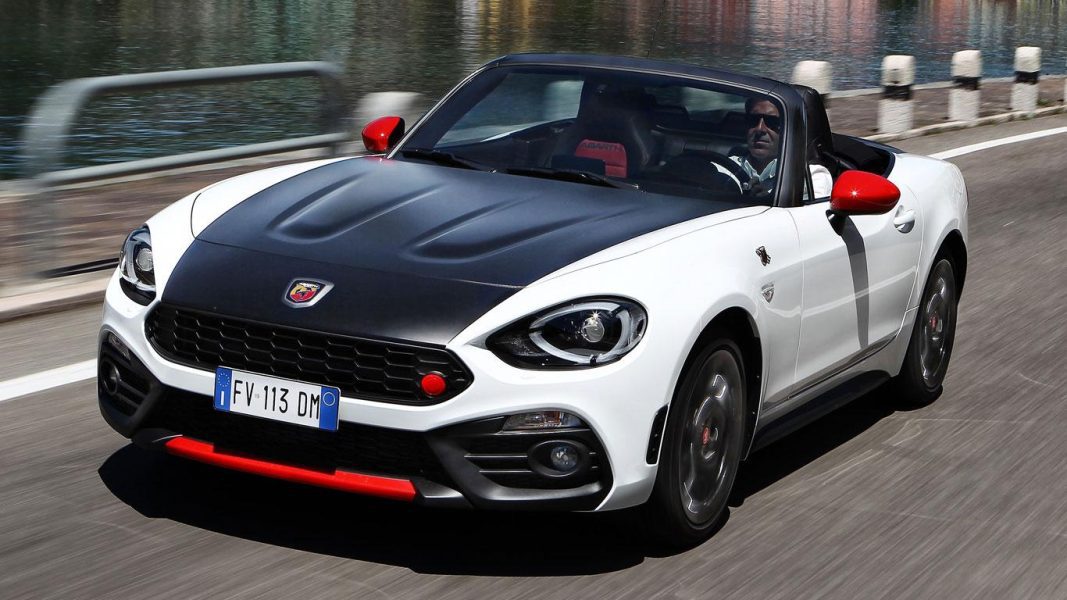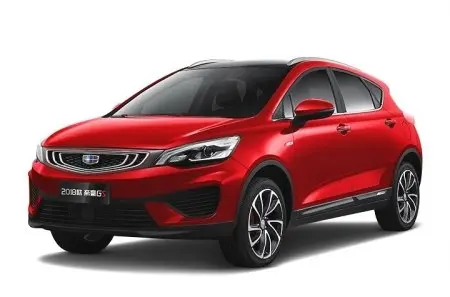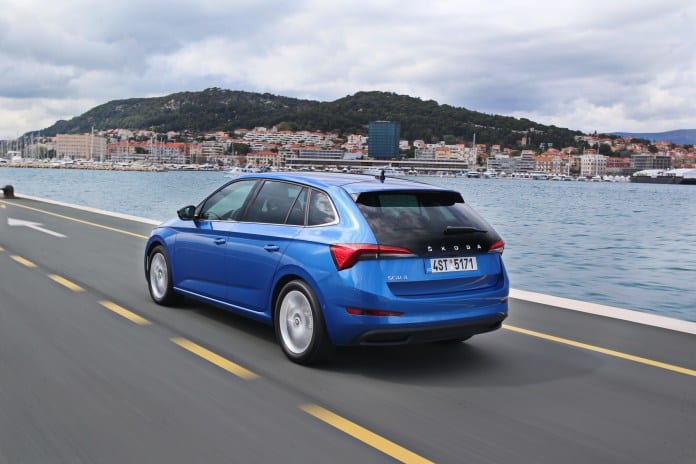
Abarth 124 Spider manual convertible 2016 review
Content
- Price and features
- practicality
- Design
- Engine and transmission
- Fuel consumption
- Driving
- safety
- Property
- Click here for more 2016 Abarth Spider 124 Convertible pricing and specification information.
- Do you prefer Mazda's original MX-5 or Abarth's world-favorite drop-top? Tell us what you think in the comments below.
Peter Anderson road test and review the new Abarth 124 Spider convertible with performance, fuel consumption and verdict.
It's no secret that we live in a divided world. Brexit. Trump. The dress is white and gold, not blue and black. Pronunciation of tomato, gif and riccardo. And now the Fiat group has opened up a new front for all of us to debate - is the 124 Spider better or worse than the Mazda MX-5 it's so heavily based on? Or is it just a dress of a different color?
The Abarth 124 Spider had a hard time gestating - it had to become an Alfa before the inevitable happened, and the management of this famous brand during the development process decided that it was too small.
Parent company Fiat swooped in, instilled a new respect-filled body, spent some time on the chassis, and the first true (well, correct, if you don't mind platform sharing...) Fiat convertible sports car since the Fiat Barchetta was born. Which has never been sold here.
Price and features
The Abarth 124 Spider comes in two specifications, manual and automatic, priced at $41,990 for the former and $43,990 for the latter. This will buy you a two-door roadster with a manual roof, 17-inch alloy wheels, a nine-speaker stereo, air conditioning, keyless entry and start, Abarth floor mats, automatic wipers and headlights, heated seats, leather steering wheel and shifter, reverse gear. camera, part-leather seats and LED taillights.
Cars this small are rarely fit to carry anyone but you.
Our car had a $2490 Visibility Pack that sounds like a reflective vest thrown into the trunk (it actually includes cross-traffic alert, active LED headlights, blind-spot monitoring, rear parking sensors, headlight washers, and daytime running lights) and $490. for Abarth leather seats.
You can add Recaro leather seats and Alcantara sports seats for $1990 if you're feeling a bit racy, while some colors are $490, like our 1974 Portogallo color (metallic gray) car. Yes, bronze gray is optional. Go find out.
practicality
Such small cars are rarely suitable for transporting anything other than you and your friend. The spare tire was a good space-saving move: 130 liters to squeeze in groceries or a couple of bags.
Inside, you'll find a pair of cup holders behind the elbow, which is one step higher than putting them under your feet, as well as a small lockable drawer above it, and a glove box the size of a snow glove.
Design
You can't please everyone, and Fiat's Centro Stile is certainly brave enough to accept that and still do its thing. They threw caution to the wind with the front of this car. It is extremely sensitive to angle, so your mind will change as you walk in circles, crouch, stand on tiptoe, trying to find the best angle. It's almost completely unconvincing in most photos, but looks better in even light with the DRLs off. Cheap honeycomb inserts don't look good in any light and could be better in high gloss. Luckily, the overwhelming temptation to chrome it in the '70s style was resisted.
The side profile carries a lot more of the old 124 Spider's original DNA, and once you get to the rear you'll see those iconic square taillights.
It's not a stunning looking car, and it's not as decided as Mazda, with which it shares its skeleton and other vital organs, but Centro Stile didn't have much time to make this car and wasn't involved in its creation. . So the Fiat designers did a good job, all things considered. The fins on the hood are pretty cool too.
Opinions were split 50/50 for non-committal viewers (that is, people who didn't have a stated position on the Mazda vs. Fiat debate), but Fiat fans - a passionate group - loved it. Mazda fans, unsurprisingly, hated it. As do Mazda employees, as a rule.
It's unlikely to blow down Mazda's doors, as one would expect from an Italian job.
However, on one point they almost agreed - the number and size of the Abarth logos were deemed vulgar and unnecessary.
Inside, everything is present and correct, without any design changes at all. You get different seats, floor mats, and badges, but if you drop the Abarth logo, you can't tell it apart from the MX-5 except for two key points.
The dash has a big red center tachometer with a digital display showing which gear you're in. The speedometer is shifted to the right and is one of the worst among all cars sold today. It's too crowded, and it's almost impossible to see at a glance how fast you're going. In our speed camera-infested cities, with their ever-changing speed limits (the latter being a real problem), you can't waste precious seconds training if you're doing 40 or 60 because your ticket will already be in the mail.
The second difference is the cool Abarth animation on the MZD-Connect screen, which works exactly the same as in Mazda and much better than Fiat's UConnect. The speakers are optional Mazda Bose devices, nine of which are scattered throughout the cabin. Even the indicator remained on the right side of the steering column.
Engine and transmission
The 124 comes with a 1.4-litre turbocharged Fiat four-cylinder engine delivering 125 kW of power and 250 Nm of torque, significantly more than both Mazda engines (1.5 and 2.0). With a more sophisticated engine, Fiat weighs 1100 kg. Acceleration from 0 to 100 km / h is faster - 6.8 seconds, but it is unlikely that Mazda will demolish the doors, as one would expect from an Italian work.
Fuel consumption
Our fuel consumption figure was a far cry from the claimed 5.1L/100km for manual driving – we got 11.2L/100km mostly in city driving, but with some fun along the way. The theory was that turbocharged torque would be less greedy than Mazda's in the real world, but that extra grunt encourages you to blatantly burn fossil fuels.
Driving
As in appearance, much has changed under the skin, but not so much that the child and bath water splashed on the pavement. The Abarth is equipped with four-piston Brembo brake calipers and Bilstein dampers that spice things up before and during corners, aided by a limited slip differential.
Between corners, you also have a useful extra torque over its Mazda twin of 250Nm, all sent to the rear wheels, below and through a tuned gearbox to live with that extra corner.
You don't have to work the 124 as hard as the MX-5; the nature of the engine is more torque oriented, which means you don't have to rev to redline. It's also good. The Abarth should be different from Mazda in both looks and feel, while retaining the best features of its admittedly brilliant donor car.
There is absolutely nothing Italian about the noise, which is both surprising and embarrassing.
Below 2500 rpm, however, the engine is very flat. Some colleagues complain that they stall when maneuvering or in traffic jams. Although I understand how this can happen, it just needs a more straight right leg. It's clear, however, that the engine could run with a bit more punch at low revs.
One thing is missing from the 124th - good noise. While the 1.4-liter engine sounds completely different from Mazda units, there is absolutely nothing Italian about the noise, which is both surprising and embarrassing. There may be four pipes, but I, and everyone else, seems to want more aggro. The Abarths are squishy-sounding cars (the Fiat 500 version sounds a bit ludicrous), while the 124 looks more whimsical but doesn't sound like it.
In funny things, Abarth, as expected, shines. It's progressive, fun and with that extra twist, a little more lively. There was a danger that the overall balance of the car could be ruined by more power, but the smart approach paid off.
safety
Four airbags, ABS, stability and traction control, active pedestrian hood and tire pressure monitoring.
The MX-5, a bit controversially, scored a maximum of five ANCAP stars in 2016, there is no official testing for the Abarth.
Property
The 124 has a three-year or 150,000 km warranty, and you can buy a three-year scheduled service for $1300. This is not advantageous compared to Mazda's offering. To be frank, Fiat's reputation isn't there either, so they should have put more effort into that area.
The difference is not day and night - that would be really stupid, because one of the cars would have to suck to cause such a discrepancy. There are some who prefer a little more punch in corners and a little more attitude. And there are those who prefer to work harder, spin the engine, be more connected. Fiat is the first - and a lot of fun - Mazda is the second, and also, as it turns out, a riot.
The Abarth is more expensive than the 1.5-liter MX-5 with the poor man's package, and much has been done to differentiate it in both style and driving feel. It glides along a shy retro line without falling into sentimental slag. With a more responsive engine (the tuners are going to have some fun with this) and a stiffer suspension setup, this could entice a few MX buyers. Anyway, this is for the Italian car brigade who will love it. And install louder exhausts.
Click here for more 2016 Abarth Spider 124 Convertible pricing and specification information.
Do you prefer Mazda's original MX-5 or Abarth's world-favorite drop-top? Tell us what you think in the comments below.

